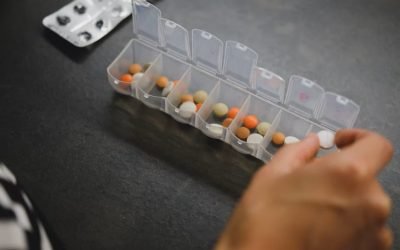Last updated: November, 2025
The distinction between soft and hard drugs often appears in public discussions about addiction, safety, and health. Yet this division is not as clear-cut as it may seem. Understanding where the idea comes from and what it really means helps build awareness about how substances affect the brain, behaviour, and wellbeing.
Understanding the Classification of Drugs
The separation between soft drugs and hard drugs began in Dutch law, distinguishing substances considered less harmful from those viewed as more dangerous. Although this distinction spread across Europe, it is not based on exact science.
Soft drugs are generally those with lower risks of physical dependence, such as cannabis, marijuana, and hashish, while hard drugs refer to substances like heroin, cocaine, or methamphetamine, which can cause intense dependence and withdrawal.
However, addiction experts now recognise that risk depends not only on the substance, but also on frequency, dosage, emotional state, and personal vulnerability. What matters most is how a substance interacts with the person’s body and mind.
Comparing Soft and Hard Drugs
Soft and hard drugs differ primarily in their chemical effects, potential for dependence, and impact on the nervous system. But there are also substances that fall somewhere in between: those with properties of both categories, depending on how and why they are used.
Examples and Effects
Soft drugs often include natural or plant-based substances such as cannabis, marijuana, hashish, or mild hallucinogens like psilocybin (magic mushrooms). These tend to produce relaxation, altered perception, or mild euphoria. Their risk lies mostly in psychological dependence, where the person begins to rely on them for comfort or escape rather than physical cravings.
Hard drugs include heroin, cocaine, methamphetamine, MDMA, crack cocaine, and synthetic opioids. These act more directly and powerfully on the brain’s reward pathways, flooding them with dopamine and creating rapid cycles of pleasure and crash. Prolonged use often leads to tolerance, physical dependence, and a high risk of overdose.
In between these categories are substances such as alcohol, ketamine, or certain prescription medications like benzodiazepines and opioids. They are legal in many places yet share addictive properties similar to hard drugs when misused.
Dependence, Tolerance, and Withdrawal
Repeated use of any psychoactive substance (whether “soft” or “hard”) changes how the brain experiences pleasure and stress. Over time, the brain adapts, requiring more of the substance to reach the same effect. This process, known as tolerance, often leads to dependence. When the substance is stopped, withdrawal symptoms such as irritability, fatigue, anxiety, or mood instability can appear.
Although soft drugs rarely cause dangerous physical withdrawal, they can still disrupt emotional regulation and daily motivation. Hard drugs, in contrast, can cause both severe physical and psychological withdrawal, sometimes requiring medical supervision for detoxification.
Beyond the Labels: Soft and Hard Use
While these categories are helpful for general understanding, real-life experiences with substances are rarely so simple. The line between soft and hard drug use blurs when emotional or psychological factors enter the picture.
For example, a person who uses cannabis occasionally may feel relaxed and in control, but another person may use it daily to avoid difficult emotions, gradually feeling dependent. Similarly, some individuals who experiment with hard drugs may not develop an addiction, while others can experience strong cravings after very few uses.
The key lies in awareness: noticing how, when, and why a substance is used. Patterns of escape, emotional numbing, or loss of control can signal that use is becoming harmful. Understanding these patterns with honesty and curiosity, rather than judgment, opens the door to prevention and healing.
Risks and Consequences of Drug Use
Whether labelled soft or hard, all drugs carry risks for mental and physical health. Frequent use can alter how the brain manages pleasure, stress, and impulse control.
When the brain becomes accustomed to relying on a substance to feel calm or energised, natural reward systems weaken. This can lead to mood swings, anxiety, and difficulty coping with everyday challenges. Relationships, concentration, and emotional balance may also be affected.
Even substances considered mild can have lasting consequences when used as a way to manage emotions or avoid discomfort. Awareness and support can help prevent these patterns from deepening into dependency.
Prevention and Awareness
Prevention begins with education, openness, and self-reflection. Understanding how different substances work and what risks they pose allows people to make informed decisions. The goal is not to judge or prohibit, but to encourage awareness, compassion, and safety.
Talking about drug use honestly (in families, schools, and communities) reduces stigma and helps identify early warning signs. Knowledge builds resilience and empowers individuals to protect both their physical health and emotional wellbeing.
Frequently Asked Questions: Difference Between Soft and Hard Drugs
Soft drugs are generally seen as less addictive and less harmful, while hard drugs carry higher risks of dependence and physical harm. However, this division is not scientific and varies by country and culture.
Soft drugs are less likely to cause physical addiction, but they can still affect mental health and behaviour. Safety depends on frequency, environment, and individual vulnerability rather than the label itself.
Yes. Although cannabis rarely causes physical withdrawal, it can lead to psychological dependence. Regular use may affect motivation, memory, or emotional balance.
Drug classification systems depend on national laws, cultural attitudes, and public health priorities. What is legal or mild in one country can be tightly controlled in another.
Awareness and education are key. Understanding the effects of substances, recognising early signs of dependency, and fostering open dialogue all reduce the risk of misuse and addiction.









